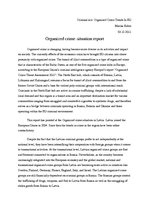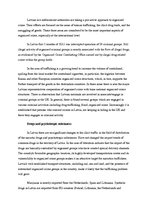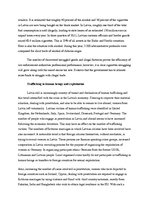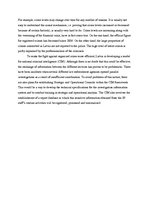It has been estimated that one third of the crimes reported to the Latvian police are solved. However, other estimates claim that the real figure would be as low as 15 percent, if the large number of crimes that are never reported were taken into account. The considerable number of unresolved crimes can partly be explained by the success criminal organizations have had in coercing victims not to press charges.
A challenge for any study of organized crime is to collect and assess data.
For example, crime levels may change over time for any number of reasons. It is usually not easy to understand the causal mechanism, i.e. proving that crime levels increased or decreased because of certain factor(s), is usually very hard to do. Crime levels are increasing along with the worsening of the financial crisis, have in fact come true. On the one hand, the official figure for registered crimes has decreased since 2008. On the other hand, the large proportion of crimes committed in Latvia are not reported to the police. The high level of latent crimes is partly explained by the professionalism of the criminals.
To make the fight against organized crime more efficient, Latvia is developing a model for national criminal intelligence (CIM). Although there is no doubt that this could be effective, the exchange of information between the different services has proven to be problematic. There have been incidents when several different law enforcement agencies opened parallel investigations as a result of insufficient coordination. To avoid problems of this nature, there are also plans for establishing Strategic and Operational Councils within the CIM framework. This would be a way to develop the technical specifications for the investigation information system and to conduct training in strategic and operational analysis. The CIM also involves the establishment of a report database in which this sensitive information obtained from the SP staff’s routine activities will be registered, processed and summarized.
…






